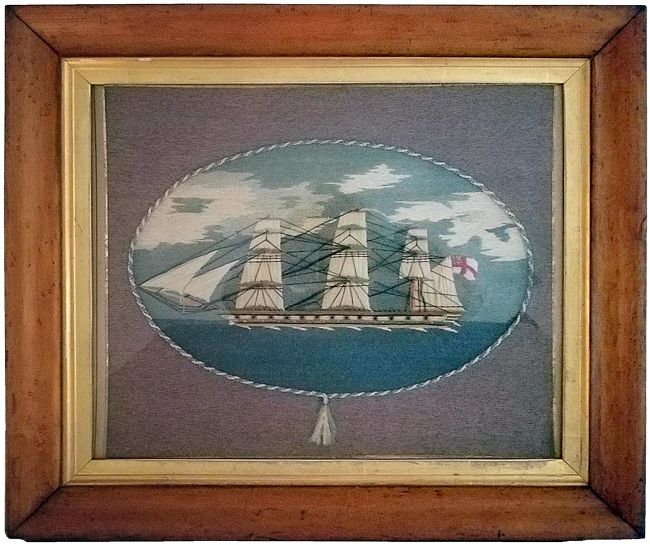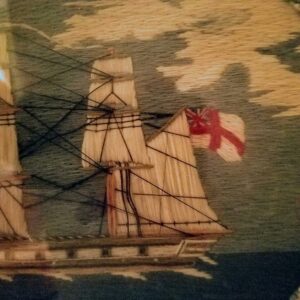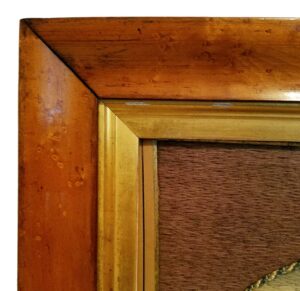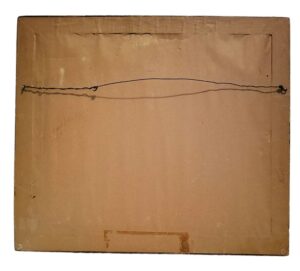BRITISH WOOL WORK
THREE MASTED BARQUE

PICTURE SIZE: Unframed 14 1/2” x 12″, viewing area
Framed 19“x 16 3/4“ x 1 1/4“
PRESENTED is a beautiful and well executed smaller wool work of a British 3 Masted Barque sailing for the British Merchant Navy. Besides the square sails, it has a complement of jibs at the bow, and a stern fore and aft rigged sail. The intricate ship design along with sea and sky, is presented in an oval embroidered cartouche with a tassel on the middle bottom The ship embroidery is surrounded by a finely woven dark taupe yarn. The frame is a finely finished wood with gold filets. It is possibly the original frame.

CONDITION:
The woolie is in excellent condition. There are no broken threads and there are no moth holes or staining. All stitches are tight. The colors are bright. The period style frame shows some minor wear that would be expected. The stitching combines all the techniques of classic woolworks of the period. There is no fading. The picture was taken under glass using incandescent lighting, and the real colors are actually brighter than in the photos.


WHEN CHOOSING A WOOL WORK, HERE ARE SOME OF THE THINGS TO CONSIDER.
Condition is probably the most important consideration. Are the threads intact, are they stretched, water stained, moth eaten, etc.
Color: Bright vibrant colors may be the sign of a recently made piece, but it also could be that of one that was stored away or out of the sunlight which would be a good thing.
Complexity of design: Embellishments like the oval cartouche add value.
Design: Some sailors had a knack for composition and color sense which make the work visually appealing.
Size: The larger the size, the higher the value. Most woolies are about 16 x 24 inches.
Stitching: There are various stitches that sailors used, many of which came from sail making, but others learned the art of embroidery so they combined complex stitches for detailing. This adds value.
If nothing else, remember CONDITION, COMPOSITION, COMPLEXITY enhance value.
HISTORY OF WOOL WORKS: British sailors crafting woolies were talented needle workers. The height of popularity of this form of folk-art was between 1840-1880. The sailors learned their craft through their daily routines of repairing the ship’s sails and taking care of their uniforms. They made the most of their limited spare time and personal space by creating works of art that could be rolled up ,, and stored under their bunks when not being worked on. These sailors were knowledgeable about their ships and their surroundings and were skilled at drawing on canvas and then transforming a simple sketch into a vibrant, detailed, and interesting ship picture. Their accomplishments is magnified by being self-taught and creating their works for the satisfaction they gave since there was no profit motive. The overwhelming majority of woolies are unsigned. Gallery prices for works such as this can range from a low of $4000.00 to a high of $35,000.00 on the average.
